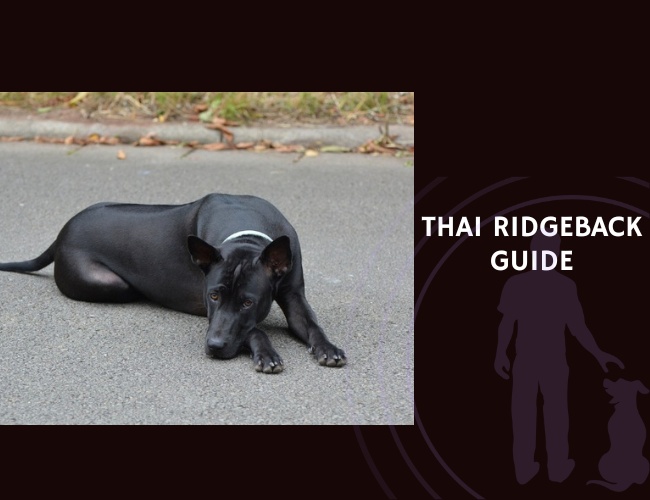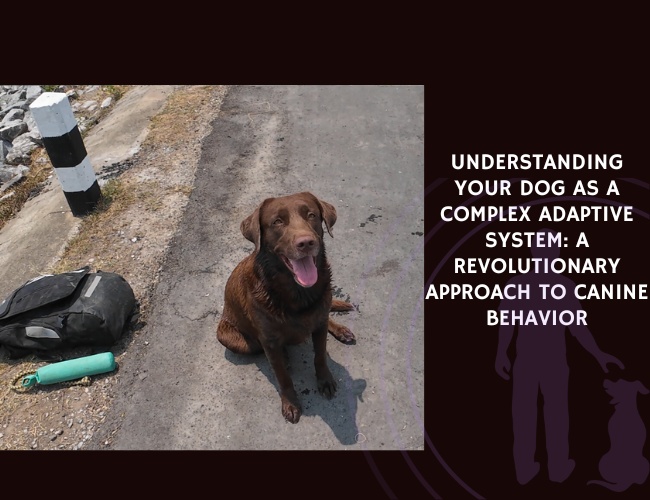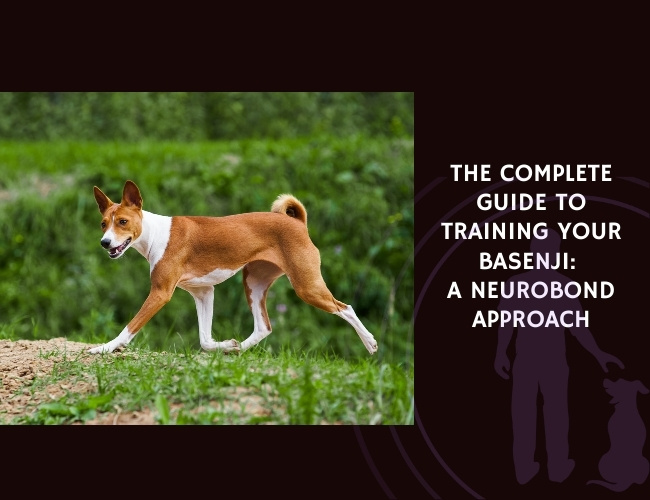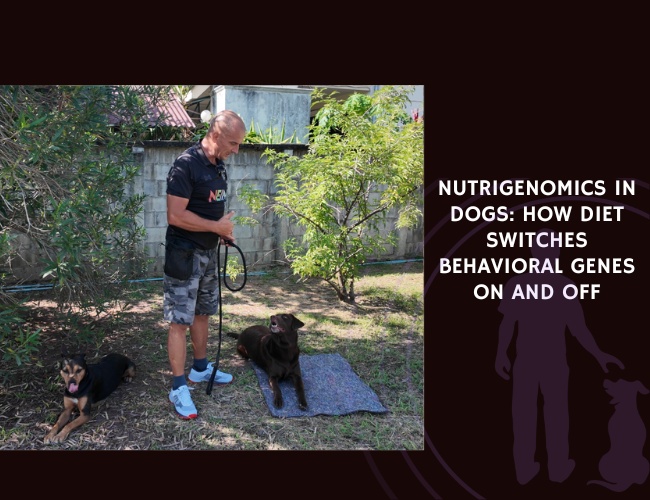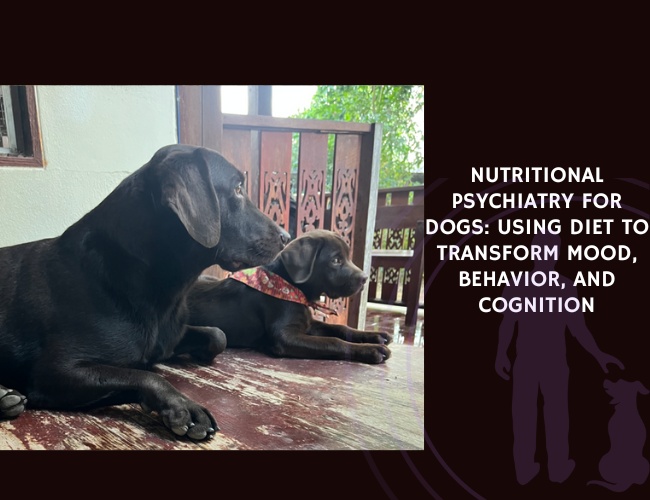Introduction to the Thai Ridgeback
Ancient Origins and Unique Heritage
The Thai Ridgeback is a remarkable breed with deep roots in Southeast Asia. Known as a pariah-type dog, this breed has lived alongside people for centuries, mostly in rural areas of Thailand. Pariah breeds refer to ancient dogs that evolved naturally, surviving by their instincts rather than human design. This means the Thai Ridgeback’s behaviors and features are shaped by survival needs, not just by selective breeding.
Over time, the Thai Ridgeback developed traits that helped it thrive in challenging environments. They served as village guardians and hunting partners. With little outside influence until modern times, the breed has stayed close to its original form, making it a living window into the past.
Distinctive Physical Characteristics
One of the most eye-catching features of the Thai Ridgeback is the signature ridge of hair along its back. This ridge forms because hair grows in the opposite direction to the rest of the coat, creating a visible line. The ridge can take on several patterns, each unique but always unmistakable.
Apart from the ridge, Thai Ridgebacks have a muscular, athletic build. Their body is lean and well-proportioned, showing the influence of natural selection for agility and stamina. The breed’s short, smooth coat suits the tropical climate they originated in. Colors range from blue (gray), black, red, and fawn, giving each dog a look that stands out.
Their upright ears and strong, flexible tail add to their alert and elegant appearance. Eyes are almond-shaped and full of expression, displaying both intelligence and caution.
Historical Significance
The Thai Ridgeback has played key roles as a hunter, guard, and companion in rural Thai communities. Its strong survival instincts and independent spirit come from centuries of fending for itself and protecting its people. This background has given the breed traits that make it both a loyal family member and a vigilant home guardian.
Understanding the origins and distinct look of the Thai Ridgeback helps set the stage for exploring its unique personality and behavior in more detail.
Character and Temperament
Independent Spirits and Survival Intelligence
The Thai Ridgeback stands out as a dog with remarkable independence and self-reliance. Bred and shaped by the tough environments of Southeast Asia, these dogs have developed sharp survival intelligence. You’ll notice they make their own decisions and prefer to assess situations for themselves. This trait can be both fascinating and challenging, especially for families expecting a highly obedient or eager-to-please pet.
Their independence means they do not rely on constant guidance from people. Instead, they observe and evaluate the world, trusting their instincts. This deep-rooted self-sufficiency is a relic from generations surviving in environments where quick thinking was essential.
Territorial Instincts and Protective Behaviors
Thai Ridgebacks are extremely territorial. They are wired to guard their environment and family. While not naturally aggressive, they are always alert to strangers and unfamiliar movements. This makes them excellent watchdogs, as they stay vigilant and ready to protect their loved ones.
You can expect a Thai Ridgeback to notify you if something seems off. Their territorial nature is balanced with a calm, watchful presence, rather than aggressive posturing. However, these instincts do require careful guidance to ensure a safe, positive atmosphere in your home.
Loyalty and Aloofness
These dogs build strong bonds with their chosen family. While they may seem reserved or aloof toward guests, their loyalty to their people is unmatched. Once a Thai Ridgeback chooses you, they stick by your side and offer deep companionship. Their devotion is quiet but obvious in their actions and watchful protection.
For those used to affectionate, everybody’s-friend type dogs, this loyalty with selective affection may seem distant, but it’s rooted in the breed’s history and need for trust.
Strong Prey Drive and Instincts
The Thai Ridgeback’s powerful prey drive reflects its background as a hunter. Small animals, quick movements, or unfamiliar wildlife can trigger chasing or hunting behavior. It’s essential to manage them responsibly, always using secure fencing and a leash when outside fenced areas.
Their strong sense of self-preservation means they avoid risky situations whenever possible. This caution, combined with their intelligence, helped them survive for centuries.
These qualities explain why understanding the Thai Ridgeback’s mindset is crucial for a happy relationship. Each trait links back to their ancient role as independent problem-solvers and protectors.

Socialization Needs
The importance of early, consistent socialization
A Thai Ridgeback’s independent spirit and natural wariness make early and ongoing socialization absolutely essential. We understand that raising a confident, well-adjusted dog can feel overwhelming. Consistently exposing your Ridgeback puppy to different people, places, sounds, and other animals as soon as possible builds a strong foundation. Introducing them to a variety of experiences helps reduce fear of new situations (neophobia) and stranger-directed aggression. Puppies that miss this critical phase may struggle more with stress and display unwanted behaviors when meeting unfamiliar people or dogs later on.
Understanding social plasticity and dog interactions
Thai Ridgebacks tend to have low social plasticity. This means they are not as adaptable in meeting new dogs or quickly accepting unknown visitors. Unlike some breeds, they do not instinctively welcome every dog at the park. Instead, expect them to be cautious—or even standoffish—when facing unfamiliar canines. We’re here to help you understand this is not a flaw, but a reflection of their protective and ancient roots. It’s important to set realistic expectations and never force your Thai Ridgeback into uncomfortable social situations.
Strategies to reduce stranger aggression and neophobia
Proactive, positive experiences shape a reliable Ridgeback companion. Here are supportive approaches you can try:
- Expose your puppy, in a positive way, to a range of friendly people and calmly mannered dogs.
- Use high-value treats and gentle encouragement—this builds trusting, enjoyable associations.
- Keep introductions brief and upbeat at first, increasing time and intensity gradually.
- Avoid overwhelming or chaotic environments, which can heighten anxiety.
- Always supervise interactions, especially with children or more assertive animals.
It’s normal for Ridgebacks to remain reserved with strangers throughout life, and your patience will be rewarded. Consistency, compassion, and positive reinforcement are your best tools to nurture confidence and reduce defensive behaviors.
Maintaining a calm, structured home routine supports their sense of security and further reduces anxiety-driven reactions. With these strategies, your dedicated Ridgeback will become a loving, stable member of your family, ready to move forward in their ongoing journey of learning and bonding.
Training Approaches
Understanding Their Unique Training Needs
The Thai Ridgeback brings a special set of traits to the training process. Their independent mindset and strong sense of self often set them apart from more eager-to-please dogs. If you’re used to breeds that love routine obedience classes, you may feel surprised by the Ridgeback’s low biddability—a term that means they don’t always work just to please their humans. Traditional, repetitive drills may quickly bore them and even cause frustration for both you and the dog.
What Works—and What Doesn’t
It’s important to adapt your methods when working with this breed. Thai Ridgebacks respond best when training is varied, purposeful, and provides mental engagement. Because of their intelligence, tasks without a clear reason or benefit are likely to be ignored after only a few repetitions. Keep sessions short and dynamic, changing up the routine regularly.
Positive Reinforcement and High-Value Rewards
Building trust is an essential step in training. Use positive reinforcement techniques. This means that when your Ridgeback gets something right, they receive a fun reward—like a favorite treat, praise, or even a quick game. High-value rewards work best, especially in distracting or challenging situations.
- Change rewards often to keep things interesting.
- Avoid forceful or dominance-based techniques. These tend to erode trust.
- Maintain consistency so your dog knows what to expect.
Addressing Escape Behaviors and Recall
Thai Ridgebacks are naturally vigilant. Without enough stimulation, they may try to escape, especially if they catch the scent of wildlife or something else piques their curiosity. This makes secure training areas essential during off-leash work. When practicing recall, choose environments where your dog is less likely to wander off, and use irresistible rewards when they return. Be patient: achieving a reliable recall with this breed can take time and creative motivation.
Supporting your Ridgeback through sensitive, trust-building methods helps guide them toward better behaviors. With understanding and the right strategies, you’ll set a strong foundation for a well-mannered companion.
Wild. Loyal. Untamed.
Ancient instincts in a modern world.
The Thai Ridgeback isn’t just a dog—it’s a relic from a primal past. Shaped by survival, not suburbia, this breed moves with quiet confidence, guards with natural vigilance, and bonds with unshakable depth.
Not here to please. Here to protect.
Expect a companion who thinks before acting. Ridgebacks don’t chase approval; they assess, they choose. That independence demands respect—and rewards it with stunning intelligence and silent devotion. Don’t train them. Partner with them.



For the few who understand.
This isn’t the breed for everyone. But for those who value trust over tricks, space over smothering, and connection over control—the Thai Ridgeback becomes more than a dog. They become a guardian of your world.
Nutritional Requirements
Balanced Diet to Fuel Energy and Health
We understand how important nutrition is for the Thai Ridgeback’s well-being. This breed needs a balanced diet to support its lean, muscular frame and active lifestyle. Their energy levels range from moderate to high, depending on age and activity. It’s best to tailor their food intake based on their individual needs.
- Puppy Ridgebacks thrive on higher calorie diets to support growth.
- Adults benefit from a stable, nutrient-rich diet that keeps them fit without promoting excess weight gain.
- Seniors may need adjusted food amounts as their metabolism slows.
The right balance of protein, fats, and carbohydrates will help maintain muscle mass, promote a healthy coat, and fuel their natural agility.
High-Quality Protein and Sensitivities
Thai Ridgebacks do best with high-quality, easily digestible, single-source proteins like chicken, fish, or lamb. This supports repair of muscles and overall health. Some dogs might show sensitivities to grains or lower-quality proteins, leading to digestive upset or skin problems.
You should:
- Choose foods where a single named animal is the main protein.
- Avoid foods with too many fillers or by-products.
- Monitor for signs of food intolerance, such as itching or loose stools.
Hydration and Skin Support
Proper hydration is especially vital for Thai Ridgebacks, particularly in warmer climates. Always provide clean, fresh water at all times. Dehydration can quickly impact their health due to their active nature and short coat.
Supplements like omega-3 fatty acids and zinc can help support their skin and coat health. Ridgebacks are prone to dryness or mild allergies, making these additions helpful in keeping their skin supple and their fur shiny.
Mindful Feeding
We’re here to help you make feeding time stress free. Monitor your dog’s body condition score regularly. Thai Ridgebacks can be prone to both under-conditioning and over-conditioning, so it’s important to adjust portions according to their activity and age.
As we continue on, let’s keep in mind how nutrition supports your dog’s daily health alongside other important aspects of their overall care.
Health Concerns
Dermoid Sinus: The Breed-Specific Challenge
Dermoid sinus is one of the most significant health concerns for the Thai Ridgeback. This condition is an embryological defect that affects the skin along the spine. It appears as a tubular indentation under the skin, which may connect to deeper tissues or even the spinal cord. If left untreated, dermoid sinus can lead to painful infections and neurological complications.
Early detection is crucial. Responsible breeders screen for this issue, and veterinarians often recommend surgical correction if a dermoid sinus is diagnosed. Regular checks—especially in puppies—will help catch any problems before they become serious. We understand how worrying this can be for devoted owners, and we’re here to help by recommending veterinary guidance as early as possible.
Other Common Health Issues
While Thai Ridgebacks are generally a hardy breed, there are additional health conditions you should know about:
- Hip dysplasia: Though not as frequent as in some Western breeds, hip dysplasia is possible. This condition affects the hip joint and can result in discomfort and reduced mobility. Screening breeding dogs and early detection are recommended for the best outcomes.
- Hypothyroidism: This endocrine disorder means the thyroid gland does not produce enough hormones, leading to sluggishness, changes in coat condition, and weight gain. Routine blood tests during annual veterinary exams will help catch this early.
- Skin allergies and congenital deafness: Some Thai Ridgebacks—especially those with dilute coat colors—may be prone to skin reactions or partial hearing loss. A veterinarian can recommend allergy management strategies and perform hearing tests as needed.
Preventive Care and Routine Checkups
Supporting your Thai Ridgeback’s health is about prevention as much as treatment:
- Schedule regular veterinary checkups for early detection of problems.
- Keep up with vaccines suitable for your region.
- Use parasite control for fleas, ticks, and mosquitoes.
- Monitor changes in appetite, energy, and skin or coat health—report concerns quickly.
By staying proactive and collaborating with a trusted veterinarian, you’ll give your Thai Ridgeback the best chance for a healthy, happy life.
As Thai Ridgebacks are unique in their needs, providing the right environment is the next step to setting them up for success.

Living Environment
Creating a Safe and Secure Space
Thai Ridgebacks are natural explorers with a strong desire to roam. This instinct comes from their ancient heritage and hunting background. Because of this, secure, escape-proof fencing is a must. A standard yard fence may not be enough, as these dogs are clever and determined when something catches their attention. They may dig, climb, or squeeze through small gaps. Ensuring your outdoor space is tightly sealed helps keep your dog safe and gives you peace of mind. Gates should latch securely, and regular checks for holes or weak spots are essential.
Calm Households Are Best
These dogs feel most comfortable in households that are calm and predictable. Loud noises, frequent visitors, or hectic schedules can stress a Thai Ridgeback. They are highly sensitive to their environment. We understand that families come in all forms, but if your home is often noisy or chaotic, a Thai Ridgeback may not settle well. They enjoy having a quiet area or retreat where they can relax away from activity. A stable, routine environment will help them thrive and build trust with their human family.
Indoor and Outdoor Adaptability
Thai Ridgebacks can live indoors or outdoors, especially in warmer climates. Their lean, muscular bodies and short coats suit tropical and moderate weather, but they still need proper shelter from sun, wind, and rain. Outdoor dogs should always have a comfortable, dry dog house and plenty of shade. Indoors, they appreciate a soft bed and a safe space that’s just theirs. Remember, parasite protection is crucial, especially outside, to guard against fleas and mosquitoes.
A balanced environment—secure, calm, and properly sheltered—sets your Thai Ridgeback up for long, healthy companionship. When you provide them with the right setting, you’ll get to see their loyal and intelligent nature shine every day.
Next, let’s look at how to keep them active both physically and mentally.
Exercise and Mental Stimulation
Physical Exercise for Body and Mind
Thai Ridgebacks need more than a stroll around the block—think adventure and activity. Their lean, athletic bodies are built for movement. This means they thrive with free running in secure, spacious areas. Whether it’s dashing across a dog-safe field or exploring new hiking trails, physical outlets are essential to prevent restlessness. Daily walks, runs, or structured play sessions help maintain muscle tone and release pent-up energy.
Keep in mind their strong prey drive and roaming instinct. Always use a leash in open, unsecured spaces, as these dogs are quick to chase after interesting sights or sounds. Fenced yards must be truly escape-proof. When their need for activity is met, Thai Ridgebacks tend to settle into calmer home behaviors, showing their relaxed, loyal side.
Mental Challenges: Engage the Instincts
These dogs are clever and independent. If not kept mentally stimulated, they may become bored and get creative in ways you might not appreciate—digging, barking, or planning their next escape. Channels for mental stimulation keep them focused and content.
Puzzle games are an excellent way to challenge a Thai Ridgeback’s natural intelligence. Choose toys that encourage problem-solving, like treat-dispensing puzzles or scent trails. Hide-and-seek games with favorite toys or snacks can also tap into their hunting instincts. Rotate activities often; repetitive tasks will quickly become boring to this breed.
- Interactive training: Keep sessions short and varied.
- Food puzzles: Make meal times more rewarding and stimulating.
- Scent work: Create simple scent trails for them to follow in the yard.
Balancing Stimulation to Prevent Issues
Without enough exercise and enrichment, a Thai Ridgeback may develop destructive or escape-oriented behaviors. We understand how important it is to keep both body and mind busy. Mix physical and mental activities throughout the day. Adjust intensity based on age and energy levels—puppies and young adults need more, while older dogs appreciate gentler routines.
A well-exercised Thai Ridgeback is a joy at home: alert, affectionate, and much less likely to develop problematic habits. With the right approach, you’ll enjoy a balanced and rewarding relationship, while setting your companion up for lifelong well-being.
Is a Thai Ridgeback Right for You?
Assessing Suitability
Bringing a Thai Ridgeback into your life is a significant decision. This breed is not recommended for first-time dog owners. Their ancient origins make them independent and highly self-reliant. If you have experience with assertive, primitive-type dogs, you may find their loyalty and intelligence deeply rewarding. However, these dogs thrive under calm, knowledgeable leadership and clear boundaries.
Before choosing a Thai Ridgeback, ask yourself:
- Are you comfortable working with a dog that resists repetitive commands?
- Can you offer patience and consistency without relying on forceful methods?
- Do you have experience setting up secure, escape-proof fencing?
If your living situation is unstable or you enjoy frequent social events, this may not be the right breed for you.
Lifestyle Compatibility
A Thai Ridgeback prefers a routine, calm environment. They are sensitive to loud noises and chaos. Households with lots of visitors or multiple pets can be stressful for them. Their strong prey drive also means sharing space with small animals—especially unsupervised—can put both at risk.
Ideal living conditions include:
- A quiet household with predictable routines
- Secure yard or enclosure (they are skilled escape artists!)
- Time and interest in daily physical and mental activities
- Limited exposure to unfamiliar people and animals unless managed carefully
Families with older, respectful children tend to do well, while those with toddlers may find the Ridgeback’s aloofness and sensitivity challenging.
Commitment and Responsibility
Owning a Thai Ridgeback is a long-term, engaging commitment. These dogs live 12–15 years on average and require ongoing engagement to stay healthy and fulfilled. Veterinary care is a must, especially for breed-specific health concerns like dermoid sinus or hip dysplasia. Responsible owners must monitor their nutrition, safeguard them from the elements, and commit to lifelong learning and training.
If you’re searching for an independent, intelligent companion and are ready for a significant commitment, the Thai Ridgeback could be a perfect match.
Their unique presence and loyalty reward those who match their needs. Now, let’s look at how to ensure their wellbeing, every day.

